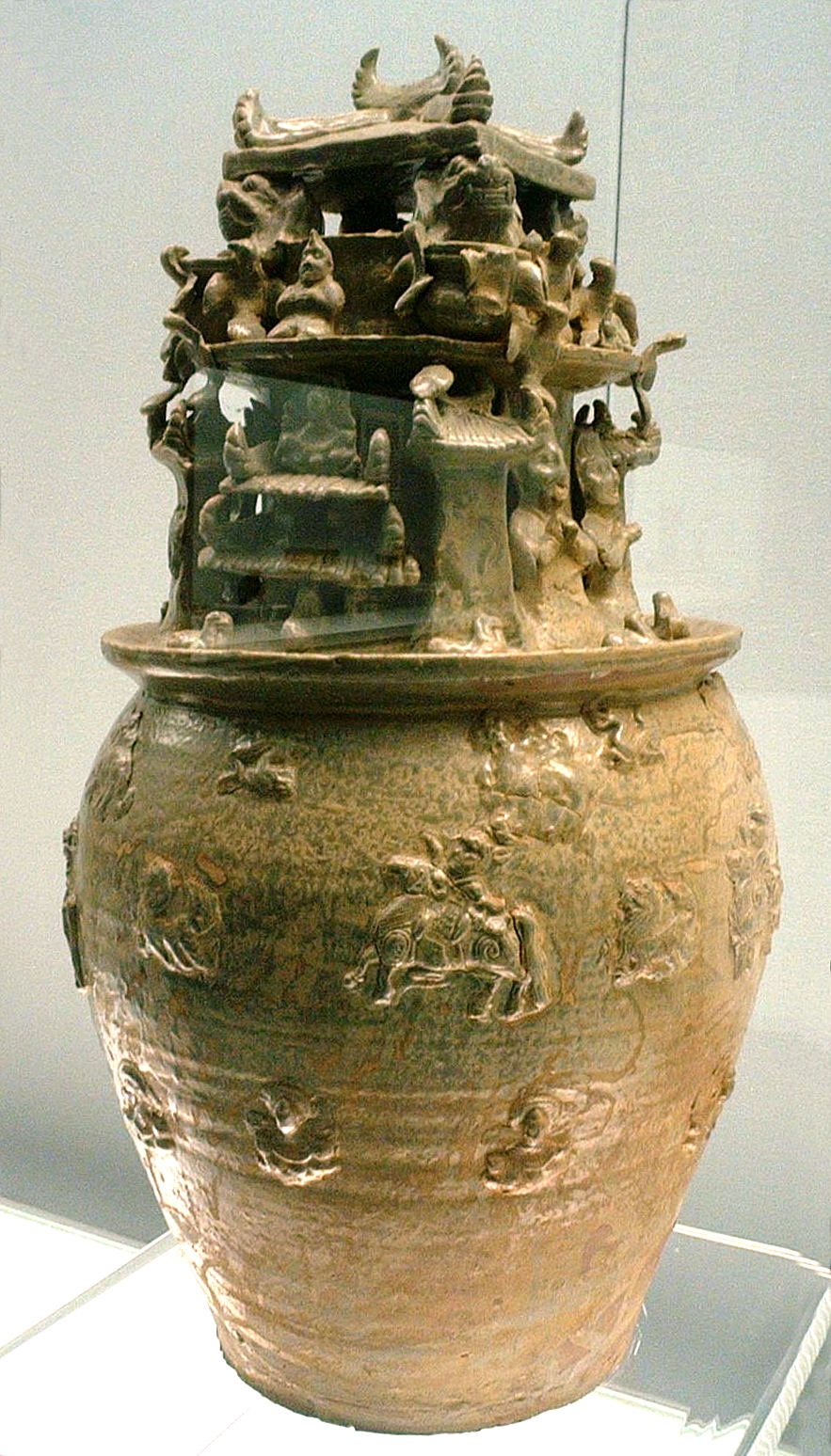hunping on:
[Wikipedia]
[Google]
[Amazon]

 The ''hunping'' (), translated as soul jar or soul vase, is a type of ceramic
The ''hunping'' (), translated as soul jar or soul vase, is a type of ceramic
(The Metropolitan Museum of Art) Since the last decades of the Han dynasty, the top of ''hunping'' vessels started to be decorated with miniature sculptures of men, animals, birds, etc. Gradually, sculptural compositions became more elaborate, including images of entire buildings. It is due to an early- Jin dynasty ''hunping'', dating to 272, that an early example of a tortoise-born stele is known to us.
A Handbook of Chinese Ceramics
from The Metropolitan Museum of Art {{Chinese ceramics Chinese pottery Death customs Jin dynasty (266–420) Pottery shapes
 The ''hunping'' (), translated as soul jar or soul vase, is a type of ceramic
The ''hunping'' (), translated as soul jar or soul vase, is a type of ceramic funerary urn
An urn is a vase, often with a cover, with a typically narrowed neck above a rounded body and a footed pedestal. Describing a vessel as an "urn", as opposed to a vase or other terms, generally reflects its use rather than any particular shape or ...
often found in the tombs of the Han dynasty
The Han dynasty was an Dynasties of China, imperial dynasty of China (202 BC9 AD, 25–220 AD) established by Liu Bang and ruled by the House of Liu. The dynasty was preceded by the short-lived Qin dynasty (221–206 BC ...
and especially the Six Dynasties
Six Dynasties (; 220–589 or 222–589) is a collective term for six Han-ruled Chinese dynasties that existed from the early 3rd century AD to the late 6th century AD, between the end of the Eastern Han dynasty and the beginning of the Sui ...
periods of early imperial China. It was characteristic of the Jiangnan region in modern southern Jiangsu
Jiangsu is a coastal Provinces of the People's Republic of China, province in East China. It is one of the leading provinces in finance, education, technology, and tourism, with its capital in Nanjing. Jiangsu is the List of Chinese administra ...
and Zhejiang
)
, translit_lang1_type2 =
, translit_lang1_info2 = ( Hangzhounese) ( Ningbonese) (Wenzhounese)
, image_skyline = 玉甑峰全貌 - panoramio.jpg
, image_caption = View of the Yandang Mountains
, image_map = Zhejiang i ...
provinces.
The purpose of a ''hunping'' is somewhat enigmatic, but archaeologists suggest that they may have been used as containers for fruit accompanying the deceased into the afterlife. According to the Metropolitan Museum of Art
The Metropolitan Museum of Art, colloquially referred to as the Met, is an Encyclopedic museum, encyclopedic art museum in New York City. By floor area, it is the List of largest museums, third-largest museum in the world and the List of larg ...
, the ancients may have hoped that the soul of the deceased would eventually reside in the vessel.Funerary urn (''hunping''), Western Jin dynasty (265–317), ca. 250–300. China. Earthenware with green glaze. (1992.165.21)(The Metropolitan Museum of Art) Since the last decades of the Han dynasty, the top of ''hunping'' vessels started to be decorated with miniature sculptures of men, animals, birds, etc. Gradually, sculptural compositions became more elaborate, including images of entire buildings. It is due to an early- Jin dynasty ''hunping'', dating to 272, that an early example of a tortoise-born stele is known to us.
See also
*Haniwa
The are terracotta clay figures that were made for ritual use and buried with the dead as funerary objects during the Kofun period (3rd to 6th centuries AD) of the history of Japan. ''Haniwa'' were created according to the ''wazumi'' technique ...
Notes
External links
A Handbook of Chinese Ceramics
from The Metropolitan Museum of Art {{Chinese ceramics Chinese pottery Death customs Jin dynasty (266–420) Pottery shapes